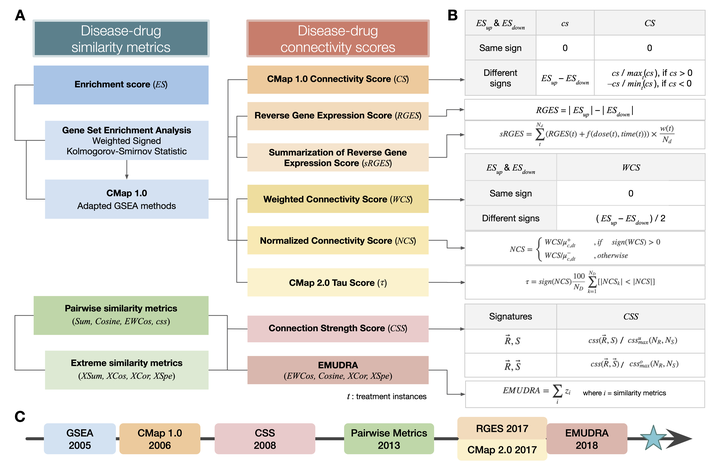Reconciling Multiple Connectivity Scores for Drug Repurposing

Abstract
The basis of several recent methods for drug repurposing is the key principle that an efficacious drug will reverse the disease molecular ‘signature’ with minimal side effects. This principle was defined and popularized by the influential ‘connectivity map’ study in 2006 regarding reversal relationships between disease- and drug-induced gene expression profiles, quantified by a disease-drug ‘connectivity score.’ Over the past 15 years, several studies have proposed variations in calculating connectivity scores toward improving accuracy and robustness in light of massive growth in reference drug profiles. However, these variations have been formulated inconsistently using various notations and terminologies even though they are based on a common set of conceptual and statistical ideas. Therefore, we present a systematic reconciliation of multiple disease-drug similarity metrics ($ES$, $css$, $Sum$, $Cosine$, $XSum$, $XCor$, $XSpe$, $XCos$, $EWCos$) and connectivity scores ($CS$, $RGES$, $NCS$, $WCS$, $Tau$, $CSS$, $EMUDRA$) by defining them using consistent notation and terminology. In addition to providing clarity and deeper insights, this coherent definition of connectivity scores and their relationships provides a unified scheme that newer methods can adopt, enabling the computational drug-development community to compare and investigate different approaches easily. To facilitate the continuous and transparent integration of newer methods, this article will be available as a live document ( https://jravilab.github.io/connectivity_scores) coupled with a GitHub repository ( https://github.com/jravilab/connectivity_scores) that any researcher can build on and push changes to.
KS and PT are co-primary authors. AK and JR are co-corresponding authors.